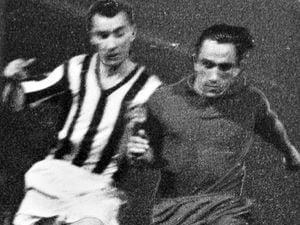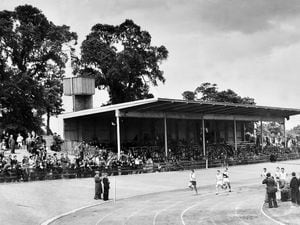Fight over fish which threatened to break-up Nato
According to the British Ministry of Defence, it was a "deliberate attack" on a British warship, "without regard for life". The Icelandic coastguard claimed its gunboat had been rammed by a British frigate.

But while the skirmish on January 7, 1976 left both ships battered and bruised, the real damage was far greater. The always-fractious relations between the two neighbouring island nations had plunged to an all-time low.
Nato, the transatlantic alliance set up to keep the peace after the Second World World, was at risk of breaking up as two of its founder members were openly at loggerheads. And it was a stand-off which would permanently decimate Britain's fishing industry.
It is 45 years today since HMS Andromeda and the Icelandic gunboat Thor clashed in the North Atlantic, leaving the British warship with a 12ft dent and the Icelandic vessel with a hole to her hull. We will probably never know exactly what happened that day, but it marked a significant escalation in the third and final of the 'cod wars', which left Britain humiliated and its once mighty fishing industry in ruins. It also explains why fishing rights, which had threatened to derail Britain's trade deal with the European Union, remain such a sensitive issue today.

Britain's relations with Iceland had been troubled ever since its smaller neighbour declared independence from Denmark in 1944. As a powerful maritime nation with one of the biggest navies in the world, Britain traditionally supported the policy of 'open seas', taking the view that the world's fish were a shared resource that should be readily accessible to all nations.
Large British vessels with crews of up to 30 would spend up to two months at a time in the seas off Iceland or Newfoundland, returning with huge catches of cod for chip shops and fishmongers’ slabs across the land. But by the 1950s, the Icelandic authorities started making territorial claims on the surrounding waters, culminating in a 14-mile exclusion zone being imposed around its shores in 1958. The move was opposed by all other members of Nato, and the Royal Navy sent warships to protect British trawlers as they continued to fish in the disputed area.
But Iceland's strategic importance between the United States and the USSR meant it was able to play the two Cold War adversaries off against one another, leaving Britain with little choice but to agree to the limit with a few minor concessions, ending the first cod war in February 1961.
A change in Iceland's government saw a second conflict break out in September 1972 when Iceland extended its territorial claim to 57.5 miles. Again Iceland was able to play its trump card by threatening to quit Nato and ordering US and British forces to leave a military base in Iceland. Trawlermen played Rule Britannia over their radios as British warships withdrew from the region on October 3, and a two-year agreement was struck in which the parties agreed to the extension of Iceland's territorial waters providing British boats could fish up to 130,000 tons.
It was the expiry of this deal in November 1975 which led to the third and most fierce fight over fish. Britain asked for the agreement to be extended by a further 10 years, with a reduced quota of 110,000 tons. Iceland refused, and instead demanded a 230-mile exclusion zone around its shores, which the British Government rejected. At the time fishing was a major part of the economy in Scotland and north-east England, and it was estimated the extension would lead to the loss of 9,000 jobs. But the Icelandic coastguard had a new weapon in its armoury: a cable-operated device which could cut the trawlers' nets, and this was now being deployed with increasing regularity.
Opened fire
The threat to an important industry could not have come at a worse time for prime minister Harold Wilson, as Britain was gripped by rising unemployment and 'stagflation'.
Matters came to a head on December 11, 1975 when Iceland's flagship gunboat Thor opened fire on three British ships close to the port of Seydisfjordur. The boats – ocean-going tug boat Lloydsman, and oil-rig supply ships Star Aquarius and Star Polaris, which belonged to the British Government – had been sheltering from a force nine gale.
The British version of events is that the Icelandic crew tried to board one of the British tugs, and as Thor broke away, Lloydsman surged forward to protect Star Aquarius.
Aquarius captain Albert MacKenzie said Thor approached from the stern and hit the support vessel before veering off and firing a shot from 100 yards. But Niels Sigurdsson, Icelandic Ambassador in London, said Thor fired in self-defence after being rammed by British vessels. Either way, it was the Icelandic gunboat that came off worse, almost sinking as a result of the clash.

The Royal Navy dispatched a large frigate force before the prime minister Wilson and foreign secretary Anthony Crosland had even been informed. Some suggested the Navy was desperate to show its importance after suffering severe spending cuts by then-chancellor Denis Healey. And Crosland, MP for the trawler port of Grimsby was only too aware of the political clout the fishing industry held. It later emerged that John Prescott, then a backbench MP for Hull, approached the new prime minister Jim Callaghan shortly after he replaced Wilson, offering to negotiate with the Icelandic Government. His efforts were rejected, amid concerns he had "given aid and comfort to the Icelanders".
Militarily, there was no contest. With just eight ships, the Icelandic coastguard was never going to be a match for the Royal Navy, which dispatched 22 frigates and refitted HMS Jaguar and HMS Lincoln as specialist ramming craft with reinforced wooden bows. West Germany and Belgium, which also fished in the disputed waters, also opposed the exclusion zone. But the third cod war would prove expensive as British and Icelandic boats continued to ram one another. Iceland tried to up the ante by buying more gunboats from the US and frigates from the Soviet Union, but these efforts were rebuffed. On February 19, 1976, Iceland broke off diplomatic relations with the UK.
While Iceland might have been hopelessly out-muscled on the seas, its strategic importance in the Cold War prevailed once more. Again it threatened to close the Nato base at Keflavik, which would have left the Atlantic exposed to the Soviet Union. Iceland got pretty much everything it wanted, and in June the third cod war was over.
The UK also established its own 230-mile exclusion zone and eventually the UN gave every sovereign nation an “exclusive economic zone”. However, as a member of the Common Market, Britain had already agreed to pool its fishing rights with other members, and the fishing towns of Scotland and the north-east of England would never recover.





